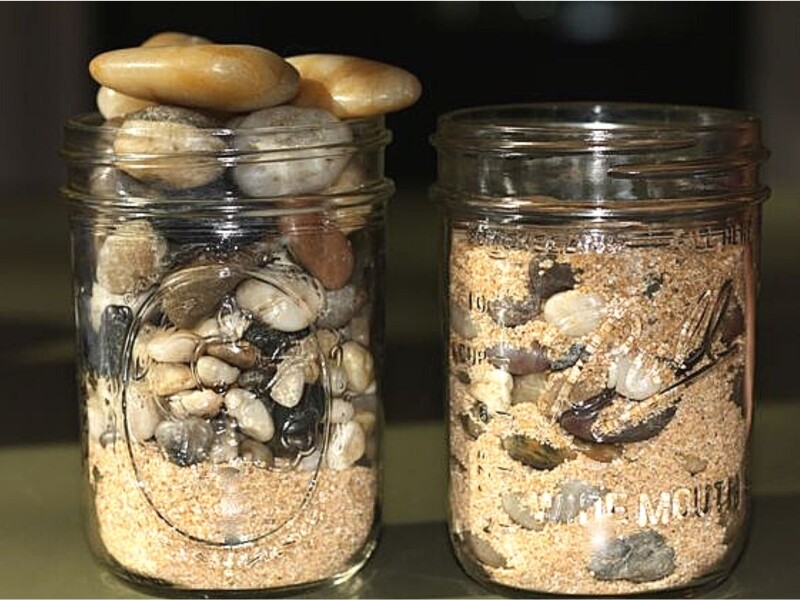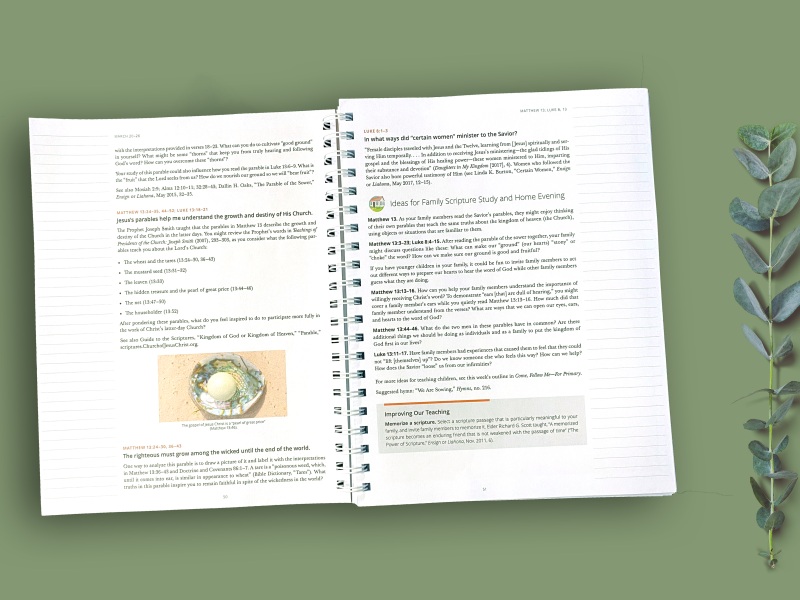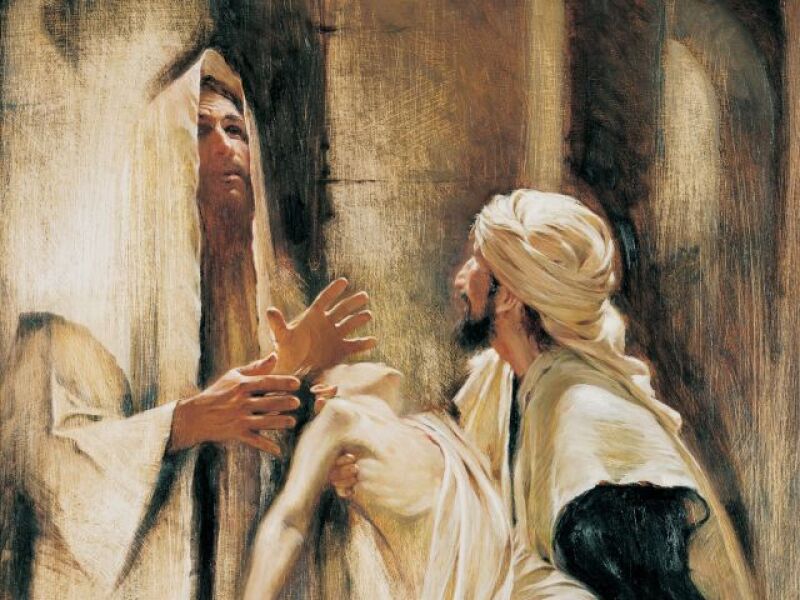As we study Revelation 15–22, the final chapters of John’s revelation, we answer the call to “come and see” that Christ is the “bright and morning star” that shines in the dark sky (Revelation 22:16). This sign is a promise that dawn is coming soon. And according to these chapters, He is coming soon. So, as we patiently wait, we see that in our waiting, our hope and faith have been purified in the fires of latter-day adversity. And this growth will have all of us calling out together, “Even so, come, Lord Jesus” (Revelation 22:20).
In Moses 6:63, the Lord says, “all things are created and made to bear record of me.” At Christmastime especially, we can apply this scripture by asking ourselves, "How do I personally bear record of Him?" This week's Come, Follow Me lesson can help guide us in this effort as we study "The Living Christ: The Testimony of the Apostles.” Let's read this witness from the Apostles and hear from several families about their experiences studying it.
In Revelation 6–14, we learn amazing insights about the Second Coming of Jesus Christ. While these chapters appear to be about horses, seals, and signs at first glance, the Savior is truly the central figure. In this episode, we'll discuss what we learn about Him and what will happen when He comes again.
In this episode, we'll begin our study of the book of Revelation—scriptures that some consider to be impossible to understand, overwhelming, and confusing. Our guest, Don Parry, says that the goal of studying Revelation is to “better understand God's designs for the future of the world and its inhabitants and prepare themselves better for the days ahead. In doing so, such individuals will find peace and calmness in their lives, because the Lord has promised us, 'If ye are prepared ye shall not fear' (Doctrine and Covenants 38:30).” So, let’s prepare, along with Don Parry, to dive into Revelation 1–5.
John the Apostle and Jude, one of Jesus’s brothers, wrote their epistles in the New Testament to correct prevailing false doctrine. These corrupt ideas, which had already started leading many Saints into apostasy, included teachings questioning whether Jesus Christ had actually appeared “in the flesh.” Today, as we study 1–3 John and Jude, we’ll dive into how these apostles stood for truth and dispelled erroneous beliefs.
Have you ever considered how inspiring Peter was during the last few years of his life? Christ had shown the Apostle how he would be persecuted and martyred—yet Peter carried on bravely and faithfully. As we study the books of 1 and 2 Peter, we will find inspiration on how we can press forward with optimism and love in the face of trials.
Sometimes just one verse or two of scripture will change you or someone you love. In our study of the book of James this week, you may find verses that help you figure out your mission in life. Or you may find encouragement to be more patient or speak with more kindness. Whatever inspires you, let’s dive in and let these words “enter … into every feeling of [our] heart[s].” And then, as we “receive with meekness the … word,” as James wrote, let's be a doer of the word, not a hearer only.
This week’s lesson of Hebrews 7–13 contains many of what we’ll call “sermons in a sentence.” Lines that have been inspiration for conference talks and Sunday School lessons for generations. And we believe memorizing a few of these powerful one-liners could help carry us through hard times. So let’s dive into life-changing truths like “Christ is the high priest of good things to come” or “cast not away therefore your confidence” and see how they could make a difference in our day to day lives.
Imagine you are in a boat sailing on the ocean. It is a perfect day on the water. The sun is shining; you can feel a slight breeze. All is well. But then you notice dark clouds rolling in. You calculate that there is no way you can make it to the shore for safety. The only thing you can do is batten down the hatches, drop anchor, and hope for the best. Now imagine that anchor. Is it big? Is it sturdy? Can you trust it? In today’s discussion of Hebrews 1–6, we will examine a specific anchor and the good it can do during the most tumultuous of storms of life.
When we start feeling like the man who literally misplaced his car for twenty years, we may be getting too distracted.
5 Min Read
For the 2023 Come, Follow Me study year, there's a brand-new resource for your home-centered gospel learning.
1 Min Read
A new interactive map of the Holy Land allows for a truly unique Come, Follow Me experience where families can—almost literally—follow the footsteps of Jesus Christ.
1 Min Read
Both the new Come, Follow Me study manual and journal edition feature huge, beautiful art pieces on their covers, and the imagery that accompanies each week’s study material is no less inspiring.
1 Min Read
Here's a little lesson for your Come, Follow Me this week: in Latin, the word beatus means fortunate, blessed, or happy. This means that the Beatitudes in Jesus’s Sermon on the Mount are the happy verses, because in Matthew 5 and Luke 6 you can substitute “blessed” with the word “happy” whenever you read it. Basically, these chapters have the recipe for a happy life—all you need is lots of light, a dash of salt, and a willing heart to follow the recipe as best as you can for a reward that won't disappoint.
Faith doesn’t have to fade in the face of uncertainty. Nicodemus, the Samaritan woman at the well, Mary the mother of Christ—they all held to their seed of faith even though they didn’t understand everything, and then they witnessed miracles. In this week’s lesson in John 2–4, we’ll dive into several accounts from the Savior’s early ministry and see how a precious bit of faith led to conversion. And along the way we’ll come to better appreciate the role that active and continuous belief has in our lives.
OK, here’s an idea: Wants and needs are two very different things. And let’s be honest—temptations are not something we would generally put in the “want” category. But that doesn’t mean we don’t need them. In fact, even Christ needed to be tempted. Before beginning His ministry and calling His disciples, Jesus went to the wilderness to fast and be closer with God. While He was there, He was tempted by the adversary. But why did Jesus need this experience and what can we learn from His example? Let’s study Matthew 4 and Luke 4–5 together to find out.
Think back to your baptism—who helped you prepare for that special day and who stood with you in the water? And even more importantly, why were you baptized and what covenants did you make? In this week’s lesson, we have the opportunity to remember this sacred ordinance by reflecting about the Savior's baptism. As we study Matthew 3, Mark 1, and Luke 3, we'll meet John the Baptist, who helped prepare the way for Christ's coming. We'll learn about how the Savior was baptized in the Jordan River. And we'll discover anew the beauty of Christ’s example of obedience and remember why we all follow Him into the water.
Do you know what your first spoken word was? How about the first spoken word of a child in your life? Whatever it was, there’s something powerful and exciting about those earliest moments when we first learned to communicate. This week as we study John, Chapter 1, we’re going to learn about the importance of a word. And not just any word—the Word. So let’s accept this invitation from the Savior to come and see the power of that Word and begin to understand Him in a whole new light.
If you’re like us, now that the new year has begun you might be experiencing holiday withdrawals. But what if we told you that Christmas can keep on going? Luckily, this week’s Come, Follow Me lets us revisit the story of the Savior’s birth in the second chapters of Luke and Matthew. In these verses, we learn of early witnesses of Christ from the shepherds to the wise men from afar who recognized that this baby boy was called to an important work. So let’s start out the new year by studying this miraculous story and bringing the Savior into the season and into our hearts once again.







